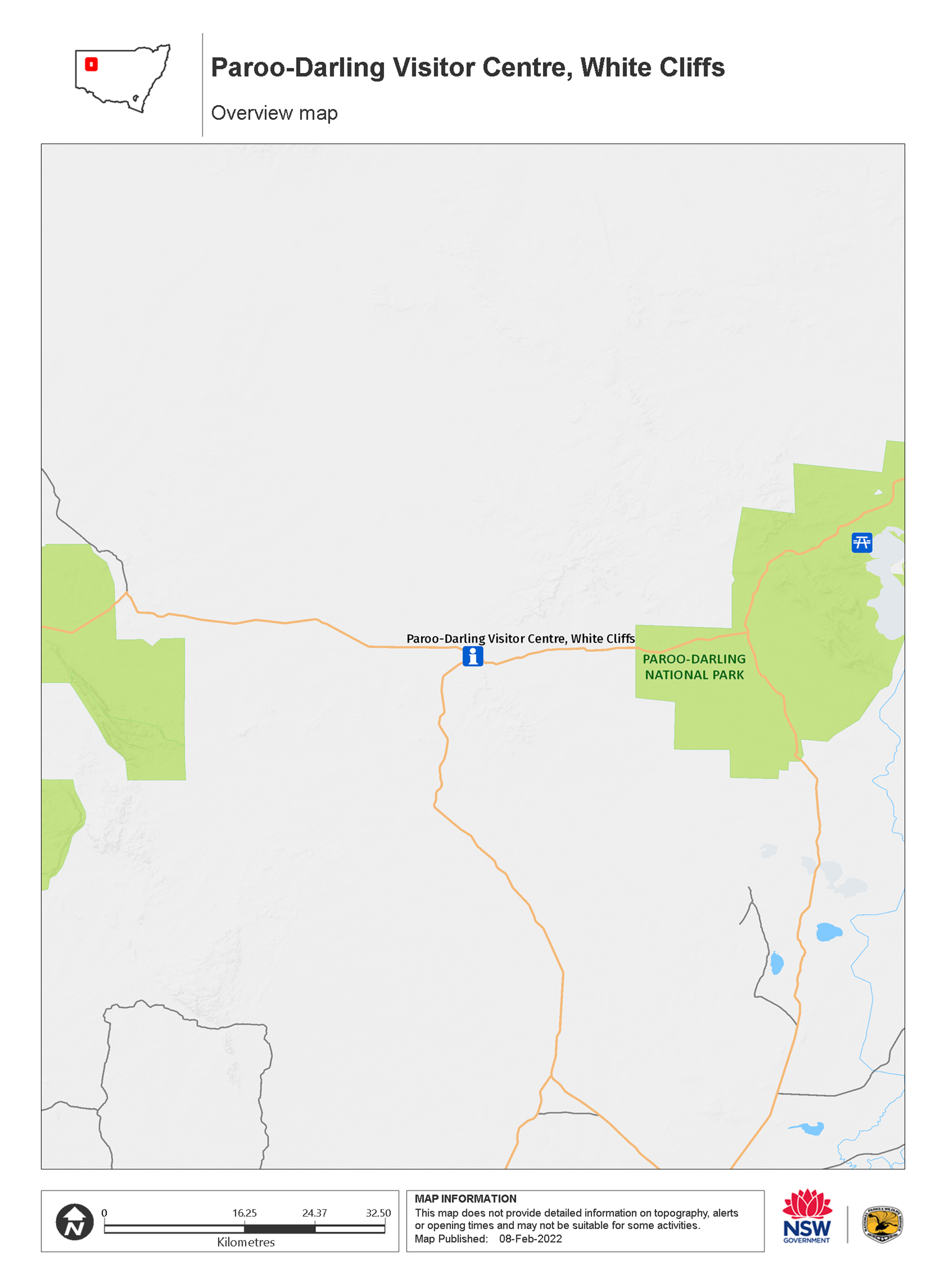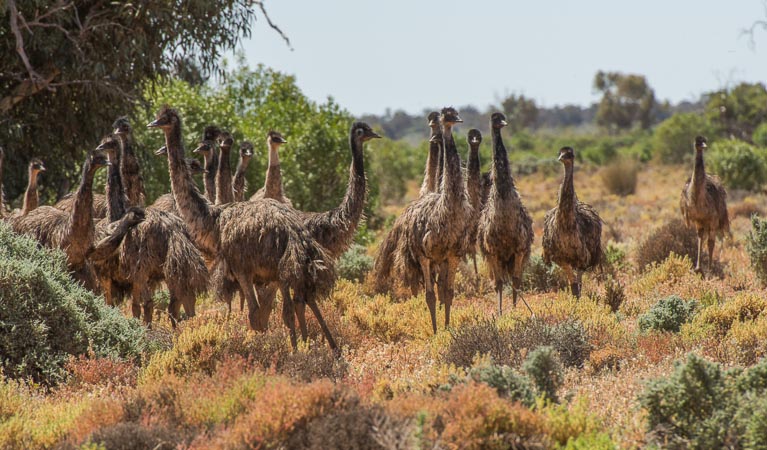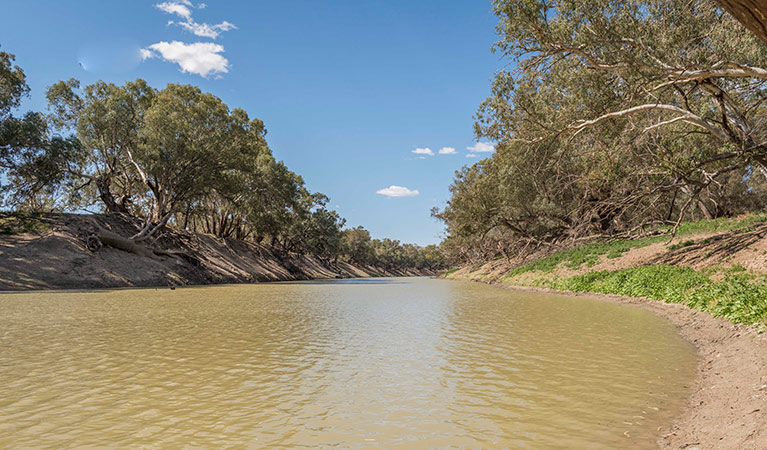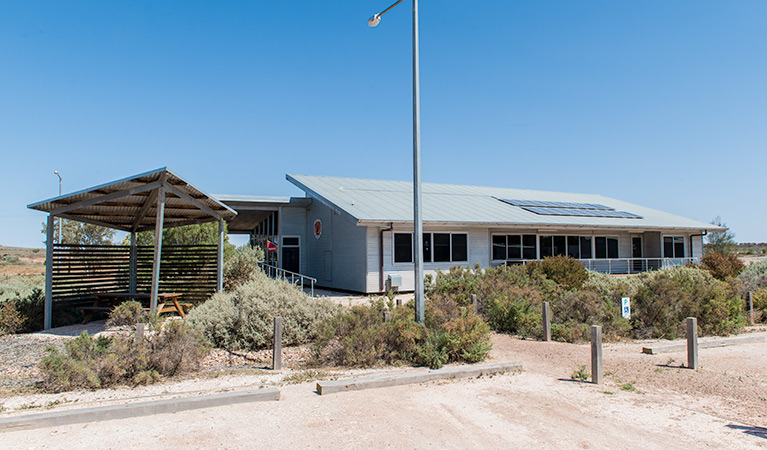Paroo-Darling Visitor Centre, White Cliffs
Paroo-Darling National Park
Overview
Before you head to Paroo-Darling National Park, why not stop and spend a little while at the visitor centre. Pick up a map, read useful information about the park, and relax at the sheltered picnic areas before you start your journey.
- Type
- Visitor centres
- Where
- 2 Johnston Street, White Cliffs, NSW, 2836 - in Paroo-Darling National Park in Outback NSW
- Accessibility
- Easy
- Opening times
Monday to Friday, 8:30am to 4:30pm. Open some weekends. Please note this visitor centre is unstaffed.
- Please note
This is a remote park and can be very hot during summer. Please arrive well prepared – bring plenty of fuel, food, water, and equipment and tell a family member or friend about your travel plans.
This is an unstaffed visitor centre stocked with maps and other useful information for visitors. It's a good idea to read up on our outback safety tips before visiting this area and check the weather before you set out as roads in the area can become impassible when it rains.
Map

Map legend

Local alerts
For the latest updates on fires, closures and other alerts in this area, see https://www.nationalparks.nsw.gov.au/things-to-do/visitor-centres/paroo-darling-visitor-centre-white-cliffs/local-alerts
Park info
- in Paroo-Darling National Park in the Outback NSW region
Paroo-Darling National Park is always open but may have to close at times due to extreme weather or fire danger.
Visitor info
All the practical information you need to know about Paroo-Darling Visitor Centre, White Cliffs.
Maps and downloads
Visitor centre
-
Paroo-Darling Visitor Centre, White Cliffs
2 Johnston Street, White Cliffs NSW 2836 - Monday to Friday, 8.30am to 4.30pm.
Learn more
Paroo-Darling Visitor Centre, White Cliffs is in Paroo-Darling National Park. Here are just some of the reasons why this park is special:
A unique and diverse ecosystem

The Paroo Overflow and its associated wetlands sustain a unique ecosystem, including such threatened species as the freckled duck and blue-billed duck. You may also see black-breasted buzzards, pink cockatoos, pied honeyeaters and any one of 55 bird species that visit the lakes. Peery Lake, a major part of the system, is part of an internationally significant wetland and protected under the Ramsar Convention.
Aboriginal heritage

The Paakantyi and Ngiyeempaa People have traditionally made this area their home. The park is a historically and culturally important site: with its hearths, quarries and specialised microblade occupation sites, the area provides significant information about changing technologies and ways of life over the last 10,000 years.
European history

Pastoralists were also attracted to the banks of the Darling River. As well as water, it provided a major transport corridor. Riverboats began navigating the system in the 1850s, and Cobb and Co also ran several routes through this important pastoral region.
- Darling River Run tag-along tour Follow the Darling River on a 15-day driving trip with Xpedition Tagalong Tours. Explore the incredible attractions in Outback NSW as you journey from Lightning Ridge through Broken Hill to Wentworth.
Plants and animals protected in this park
Animals
-

Wedge-tailed eagle (Aquila audax)
With a wingspan of up to 2.5m, the wedge-tailed eagle is Australia’s largest bird of prey. These Australian animals are found in woodlands across NSW, and have the ability to soar to heights of over 2km. If you’re bird watching, look out for the distinctive diamond-shaped tail of the eagle.
-

Emu (Dromaius novaehollandiae)
The largest of Australian birds, the emu stands up to 2m high and is the second largest bird in the world, after the ostrich. Emus live in pairs or family groups. The male emu incubates and rears the young, which will stay with the adult emus for up to 2 years.
-

Red kangaroo (Macropus rufus)
The red kangaroo is one of the most iconic Australian animals and the largest marsupial in the world. Large males have reddish fur and can reach a height of 2m, while females are considerably smaller and have blue-grey fur. Red kangaroos are herbivores and mainly eat grass.
Plants
-

Mulga (Acacia aneura)
Mulga are hardy Australian native plants found throughout inland Australia. With an unusually long tap root, the mulga is able to withstand long periods of drought.
-

Saltbush (Atriplex nummularia)
A hardy Australian native plant, the saltbush is a small spreading shrub that can withstand dry salty soils such as those found in the desert plains of western NSW. It is grey-white in colour and has small spear-shaped succulent leaves. It flowers from December to April.

